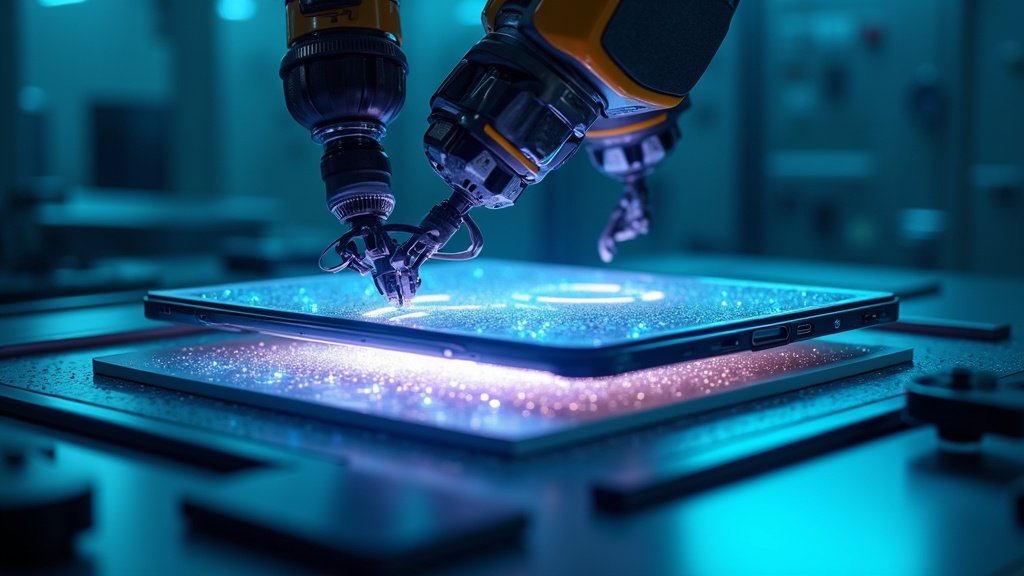MountBay Energy, a firm focused on sustainable infrastructure for the AI economy, has announced a significant scientific advancement leveraging microbial biofilms to enhance the longevity and performance of grid-scale energy storage systems. The breakthrough centers on a novel bio-integrated insulation method designed to manage heat within battery modules, a critical factor affecting battery lifespan and efficiency.
Spearheaded by company founder Vrushabhraj Tanawade, the research introduces the application of specific thermophilic and mesophilic microbial consortia – communities of microorganisms thriving in high and moderate temperatures, respectively – within insulation materials. This innovative approach aims to naturally regulate the thermal environment surrounding battery cells, mitigating the stresses caused by temperature fluctuations and buildup.
Pioneering Bio-Integrated Technology
The core of MountBay Energy’s innovation lies in what Tanawade describes as “biology meeting infrastructure.” By integrating natural biological mechanisms into energy system design, the company seeks to harness the inherent capabilities of microbial life to solve complex engineering challenges.
According to preliminary findings from MountBay Energy, the bio-integrated insulation method has demonstrated remarkable results. Testing indicates a reduction of internal battery temperature by up to 22%. Crucially, this thermal management improvement also contributes to a 30% improvement in carbon lifecycle efficiency for the battery systems.
The method is characterized by MountBay Energy as being circular, biodegradable, and scalable. These attributes align with principles of sustainable development, offering potential benefits for climate resilience and contributing to a reduction in fire risks associated with overheating energy storage units.
Implications for Grid-Scale Energy Storage
The demand for grid-scale energy storage is rapidly increasing, driven by the expansion of renewable energy sources like solar and wind, which require reliable storage to ensure consistent power supply. The longevity and efficiency of these large battery systems are paramount for economic viability and grid stability.
MountBay Energy’s microbial biofilm technology addresses key limitations of current battery technology, particularly concerning thermal degradation and material sustainability. By extending battery lifespan and improving efficiency through biological integration, the innovation could significantly reduce the overall cost and environmental footprint of large-scale energy storage.
This research positions MountBay Energy as a frontrunner in the emerging field of integrating biological materials into the energy sector. The company’s focus on sustainable infrastructure is particularly relevant given the increasing energy demands projected for powering advanced technologies, including the AI economy.
Looking Beyond Earth: The Lunar Solar Belt
In addition to the terrestrial battery breakthrough, MountBay Energy also released a preliminary feasibility report outlining a far more ambitious long-term project: a ‘Lunar Solar Belt’. This proposal envisions establishing a continuous solar array on the Moon that would transmit clean energy back to Earth.
The report details the technical feasibility of such an undertaking, targeting deployment by the 2030s. Key technologies identified for the project include in-situ resource utilization (ISRU), which involves using materials available on the Moon’s surface, and the deployment of autonomous lunar robotics for construction and maintenance.
Power transmission from the Moon to Earth is proposed via microwave power transmission, a technology capable of beaming energy across vast distances. The report estimates a potential energy return on investment (EROI) of 8:1 for the ‘Lunar Solar Belt’, suggesting a highly efficient energy generation system once operational.
A Diplomatic Framework for Space Energy
Recognizing the international implications and potential challenges of such an extraterrestrial energy project, MountBay Energy is also proposing a diplomatic framework titled ‘The Earth-Moon Energy’. While details are preliminary, this initiative appears aimed at establishing international cooperation and guidelines for the development and utilization of lunar energy resources and transmission to Earth.
Conclusion
MountBay Energy’s announcements underscore a bold vision for the future of energy, combining biological innovation on Earth with ambitious extraterrestrial projects. The microbial biofilm technology for enhanced battery longevity offers a tangible, near-term solution for improving the sustainability and performance of critical grid infrastructure. Simultaneously, concepts like the ‘Lunar Solar Belt’ highlight the company’s long-term perspective on tapping into new energy frontiers to meet the growing global demand, particularly for powering the energy-intensive technologies of tomorrow like artificial intelligence. The successful integration of biology and engineering, as demonstrated by the biofilm research, could pave the way for a new generation of more efficient, sustainable, and resilient energy systems both on and off-world.





